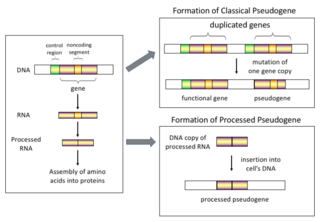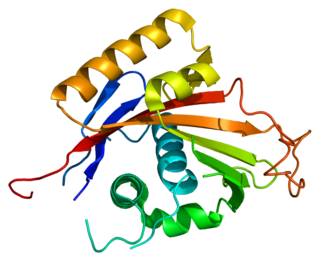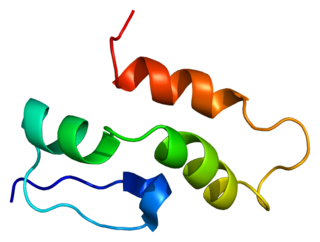
Pseudogenes, sometimes referred to as zombie genes in the media, are segments of DNA that are related to real genes. Pseudogenes have lost at least some functionality, relative to the complete gene, in cellular gene expression or protein-coding ability. Pseudogenes often result from the accumulation of multiple mutations within a gene whose product is not required for the survival of the organism, but can also be caused by genomic copy number variation (CNV) where segments of 1+ kb are duplicated or deleted. Although not fully functional, pseudogenes may be functional, similar to other kinds of noncoding DNA, which can perform regulatory functions. The "pseudo" in "pseudogene" implies a variation in sequence relative to the parent coding gene, but does not necessarily indicate pseudo-function. Despite being non-coding, many pseudogenes have important roles in normal physiology and abnormal pathology.

Ferritin is a universal intracellular protein that stores iron and releases it in a controlled fashion. The protein is produced by almost all living organisms, including algae, bacteria, higher plants, and animals. In humans, it acts as a buffer against iron deficiency and iron overload. Ferritin is found in most tissues as a cytosolic protein, but small amounts are secreted into the serum where it functions as an iron carrier. Plasma ferritin is also an indirect marker of the total amount of iron stored in the body, hence serum ferritin is used as a diagnostic test for iron-deficiency anemia.

Pituitary adenylate cyclase-activating polypeptide also known as PACAP is a protein that in humans is encoded by the ADCYAP1 gene. PACAP is similar to vasoactive intestinal peptide. One of its effects is to stimulate enterochromaffin-like cells. It binds to vasoactive intestinal peptide receptor and to the PACAP receptor.

The gastric inhibitory polypeptide receptor (GIP-R), also known as the glucose-dependent insulinotropic polypeptide receptor, is a protein that in humans is encoded by the GIPR gene. GIP-R is a member of the 7-transmembrane protein family, a class of G protein–coupled receptors. GIP-R is found on beta-cells in the pancreas.

Putative neuropeptide Y receptor type 6 is a protein that in humans is encoded by the NPY6R gene.

Blood group Rh(CE) polypeptide is a protein that in humans is encoded by the RHCE gene. RHCE has also recently been designated CD240CE.

ATPase, Na+/K+ transporting, alpha 2 (+) polypeptide, also known as ATP1A2, is a protein which in humans is encoded by the ATP1A2 gene.

Ferritin light chain is a protein that in humans is encoded by the FTL gene.

U1 small nuclear ribonucleoprotein C is a protein that in humans is encoded by the SNRPC gene.

Cytochrome c oxidase polypeptide 7A2, mitochondrial is an enzyme that in humans is encoded by the COX7A2 gene.

Myosin light polypeptide 6 is a protein that in humans is encoded by the MYL6 gene.

Cytochrome c oxidase subunit 6A1, mitochondrial is a protein that in humans is encoded by the COX6A1 gene. Cytochrome c oxidase 6A1 is a subunit of the cytochrome c oxidase complex, also known as Complex IV, the last enzyme in the mitochondrial electron transport chain. A mutation of the COX6A1 gene is associated with a recessive axonal or mixed form of Charcot-Marie-Tooth disease.
UDP glucuronosyltransferase 1 family, polypeptide A cluster, also known as UGT1A@, is a human gene.

Ferritin heavy chain is a ferroxidase enzyme that in humans is encoded by the FTH1 gene.

DNA directed RNA polymerase II polypeptide J-related gene, also known as POLR2J2, is a human gene.

CYP26C1 is a protein which in humans is encoded by the CYP26C1gene.

CYP2A7 is a protein that in humans is encoded by the CYP2A7 gene.

UDP-glucuronosyltransferase 1-8 is an enzyme that in humans is encoded by the UGT1A8 gene.

UDP glucuronosyltransferase 1 family, polypeptide A7 is a protein that in humans is encoded by the UGT1A7 gene.
Ferritin heavy chain 1 pseudogene 3 is a protein that in humans is encoded by the FTH1P3 gene.

















